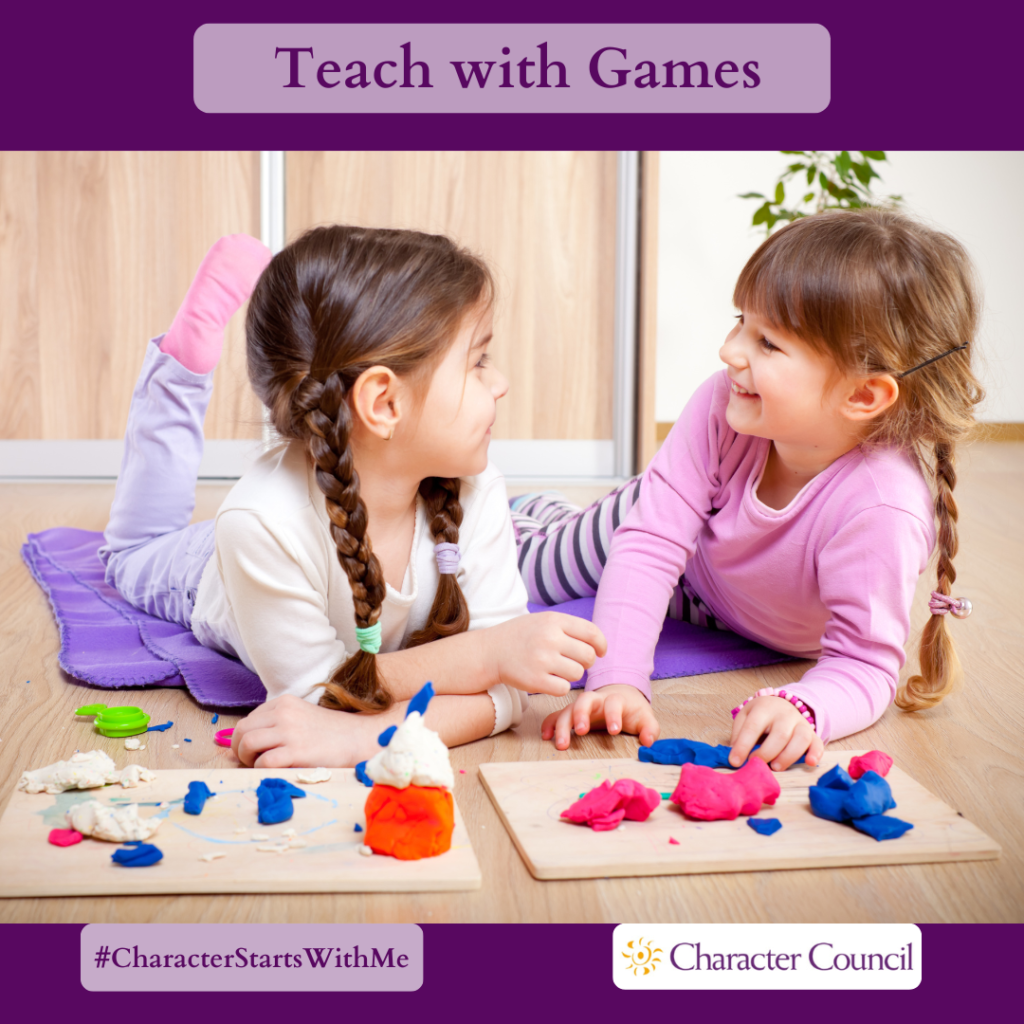
Acceptance Activities
The activities here are fun ways to teach character. The game aspect makes the lesson more memorable. Each activity has processing questions at the end. Without processing the activity, the exercise is just a game. To make it a stronger lesson when you process it, relate the character quality to a core value that your organization promotes.
Consider picking a student to run the activity. You will need to give them time ahead of the activity to prepare. Another option is to pick a few students to run the activity for a younger classroom after you have run it for your class. Encourage your students to repeat it in the home for younger siblings or even parents.


Stand in front of the seated classroom. Announce that you are going to make it rain in the classroom. It is important that no one speak during this activity to get the full effect of the rainstorm. Stand at one side of the classroom. Explain that they are to copy your action when you stand in front of their row, area, table etc. (It isn’t necessary to walk around the room, just pace back and forth in front.) Start by rubbing your hands together. Walk from one side of the room to the other until everyone is rubbing their hands together. Everyone should continue to rub their hands until you give them the next action. Go back to where you started and begin snapping your fingers. On your next pass begin making a loud pattering sound by slapping your thighs. Optional: the height of the rainstorm is stomping feet. If this would be too much to control or too loud for your environment, you may want to skip this step. Now it is time for the storm to subside. If you added the stomping feet, go back to the slapping thighs the same way you started each action. Then take everyone back to snapping fingers and then rubbing hands. Now it is time for the storm to end. Make the signal to be quiet as you walk across the room and slowly stop the hands from rubbing.
To process this activity, ask these or similar questions:
- Did you think we could make it rain?
- Did it sound like rain?
- How would this storm have sounded if everyone had the exact same kind of snap?
- How would this storm have sounded if there were only 5 of us?
- Does this teach you anything about excluding classmates from your play?
The variations within each of us is what give this storm its depth. It needs a large group for the sounds to mix properly. A select few could not have made storm alone.

This activity is based on the board game, Outburst, where a team is given a topic (such as foods that are brown, 4 legged animals, breakfast cereals, TV shows, etc) and in 60 seconds they all shout out as many examples as they can in an attempt to match a predetermined list. To use it in a classroom setting, start out by announcing a category and having each student write down their responses individually. Rather than match a list you could count the number each has. (Graphing or averaging the counts would add a math connection.) You may want to do this for several categories. Next, put the students in small groups who will work together on a common list. You can repeat the categories or choose new ones. Now that they have the idea you can actually play a few rounds of the game to add more energy to the lesson. For a list of topics, you can use cards from the actual board game, find lists using your favorite internet search engine or make up ones appropriate to the age of your students or lists from current and past lessons.
To process this activity, ask these or similar questions:
- Did you enjoy playing this game?
- Did you get more answers working alone or together?
- Did answers that others said spark ideas of other answers for you?
- Do you think you will remember this game when it comes to valuing our differences?

Mix It Up At Lunch
A Mix It Up at Lunch event is a simple call to action: take a new seat in the cafeteria. By making the move, students can cross the invisible lines of school division, meet new people and make new friends.
This is a great activity that can be planned, organized and executed by the students for the whole student body. The mix up needs to have some level of control so that students aren’t picking friends. There needs to be a randomness to the table assignment. You may also need to plan some icebreaker questions so lunch doesn’t become a silent meal.
To process this activity, ask these or similar questions:
- Was it scary to think of not picking your own seat in the cafeteria?
- Did you meet anyone new at the lunch table?
- Can you think of other habits that you aren’t really aware of?
- Can you think of other ways we can approach diversity and acceptance?